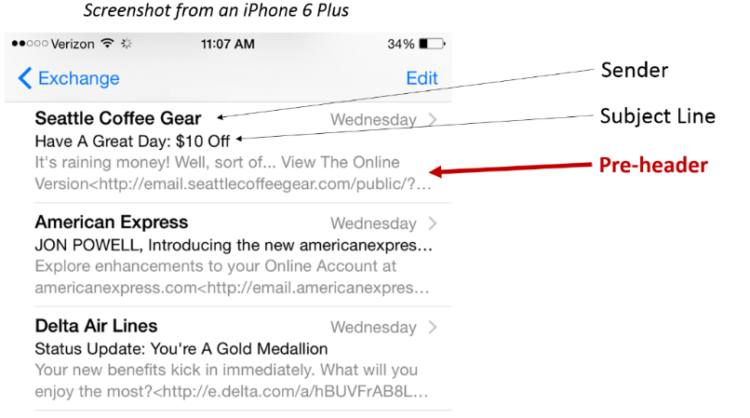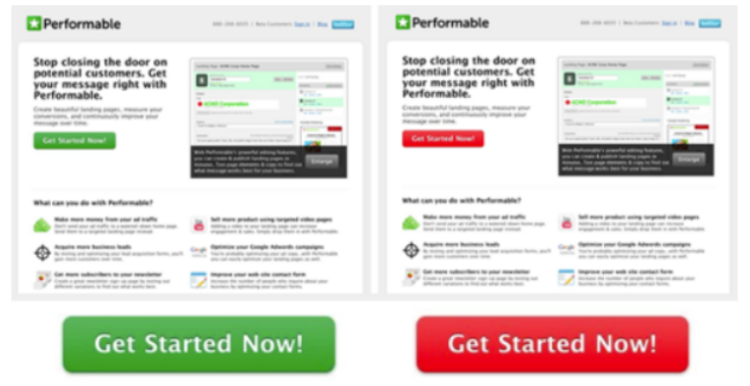Here are 6 email marketing factors that you should test consistently. The more that you test these factors, the more you’ll learn about your audience and the better you’ll get at crafting engaging and high-converting emails.
- Subject Line — The subject line is the first thing that subscribers see when you send them an email campaign. For that reason, it’s one of the most important factors to spend time optimizing. If your subscribers don’t open your email, then they won’t read, they won’t click, and they definitely won’t convert. And if you send enough un-engaging subject lines to your audience, your deliverability rate could even start to tank. Great subject lines, though, will engage your audience and keep them opening your emails.

Here’s an example of subject line test results.
- Preheader — After reading the subject line, your recipient’s eyes will typically flick to the preheader of the email if they still haven’t decided whether they want to open or not. While this element doesn’t have as much sway as the subject line (usually), it’s still worth running A/B tests to determine which preheaders most encourage your audience to open. Little details can sometimes make a big difference.

- Sender — Who is the email coming from? Believe it or not, who the email comes from can have a pretty significant impact on the open rate of your email campaigns. If I send an email from alec@mydomain.com, for example, I’ll probably get a higher open rate than if I sent from marketing@mydomain.com (test it for yourself!). You can test different from names for your campaigns (girls name vs. boys name) and even different email profile pictures (attractive pictures might increase open rate, for example — test it!).
- Number of Links — A lot of email marketers will just have their linked CTA at the bottom of their email, but you can try to increase clicks (test it) by increasing the number of links within your email. Try including 3 CTA links within your email vs. 1 CTA link and see which email gets more clicks — did the one with more clicks also get more conversions? Why or why not? Every business and audience is different, so test it for yourself to see what works best.
- CTA — When you send an email campaign, you want people to click your CTA. If they don’t, then the campaign… well, failed. Or, at least, it didn’t get the results you were hoping for. To avoid that, consistently test and optimize the CTA of your broadcasts, drip sequences, and triggered emails. Try different special offers, word those offers differently, even move the CTA to a different place in your email, then see what performs best, and do it again. The more you test your CTA, the better your click-through rate will become.
- Image — A lot of emails will have an image inside of them, maybe it’s a click-able image that leads to the CTA link or a header image that identifies the brand and sender of the email. And images are a more powerful email element than you might first expect. People spend more time looking at images than they do reading text. So test the image(s) within your email campaigns to determine what kinds of images receive the most attention (images in focus vs. out of focus, images of people vs. images of scenery, images representing the audience’s pain vs. their desires, etc…). Try to find engagement trends related to different kinds of images and use more of the types of images that engage your audience.
- Colors — You can also try testing the colors of your emails. Many people wonder what color creates the highest conversion rate, but the answer to that question is just as varied as the business’ asking it. Generally speaking, a color which stands out and draws attention will increase click-through rate slightly (since the CTA is easy to find). Test a few of your brand colors to see what receives the most clicks. It’s a small detail, but it might make a difference in click-through rate. You can’t know unless you test!

The red button outperformed the green button by 21% in this test.
A quick note about control groups
A/B testing is great for determining what colors, subject lines, images, pre-headers, and other small elements compel your audience to action. But if you want to test the impact of your email marketing as a whole — for example, how much money your email marketing efforts are generating for the business — then you’ll want to make use of control groups.
Put simply, control groups are a testing methodology where you don’t send emails to one randomly selected group of subscribers for a period of time. Once the test is finished, you compare the results (impact on revenue, conversions, etc) of your control group (those who didn’t receive email) up against those who did receive your email(s). This is a great way to test the overall impact of your email marketing efforts or a specific email (triggered emails, for instance). You can learn more about this over here.
